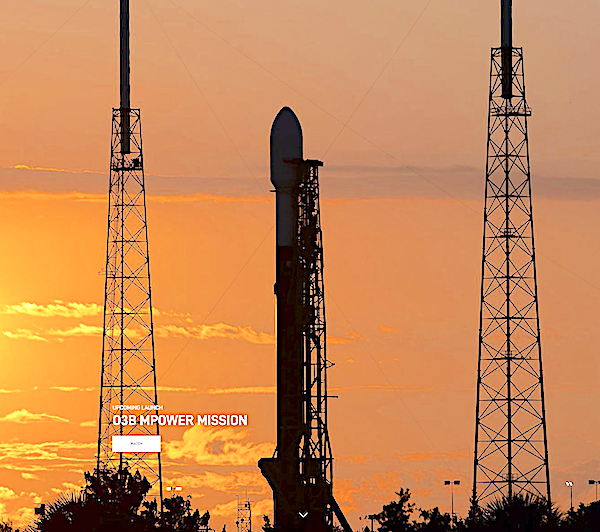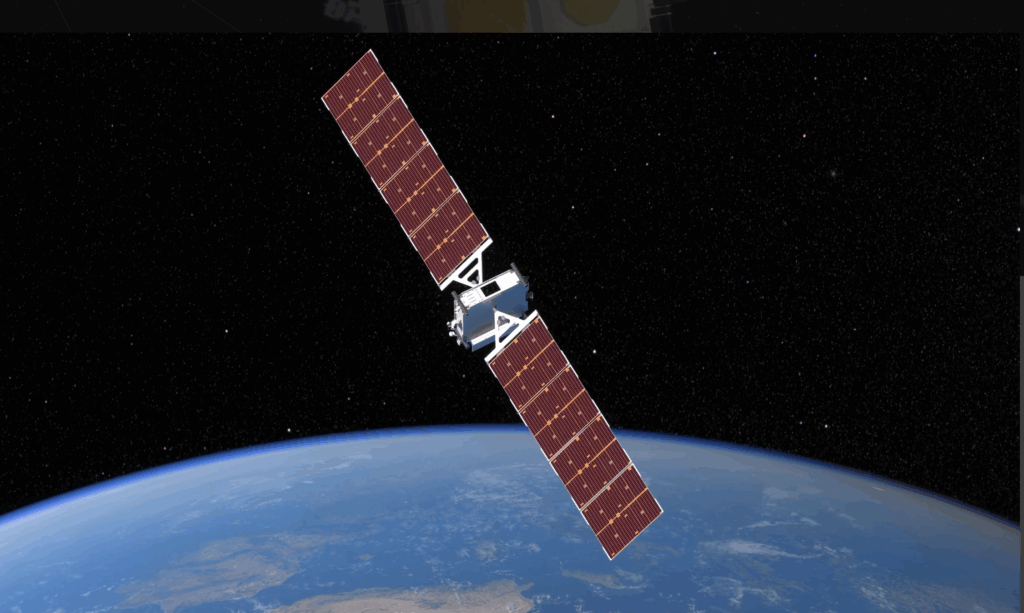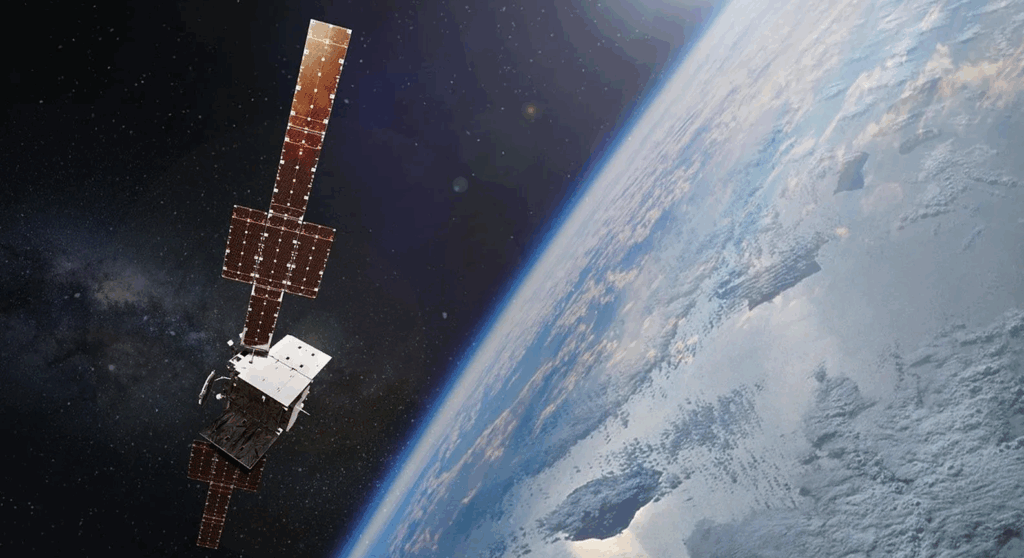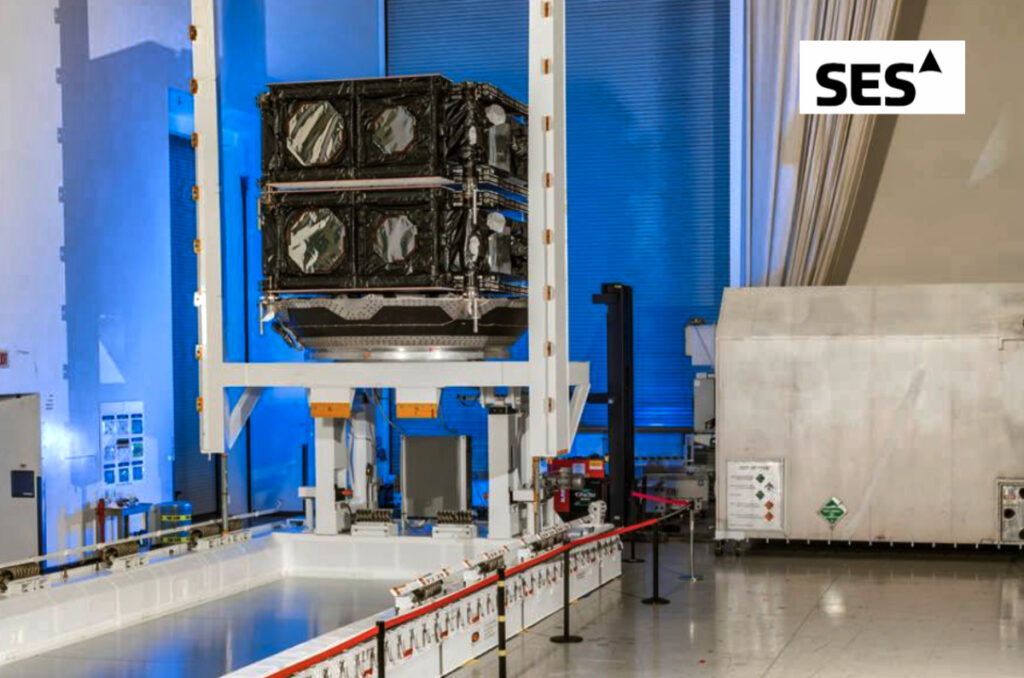
SpaceX is targeting Monday, July 21 for a Falcon 9 launch of the SES O3b mPOWER mission to medium Earth orbit from Space Launch Complex 40 (SLC-40) at Cape Canaveral Space Force Station in Florida. The two-hour launch window opens at 5:12 p.m. ET. If needed, a backup opportunity is available Tuesday, July 22 with the same window.
According to weather officials, there’s a 50% chance of favorable weather conditions at the time of the launch. Officials are monitoring weather conditions with concerns related to Anvil Cloud Rules, Cumulus Cloud Rule, Surface Electric Field Rule. The forecast calls for a temperature of 88°F, overcast clouds, 100% cloud cover and a wind speed of 7mph.
A live webcast of this mission will begin about 15 minutes prior to liftoff, which you can watch on X @SpaceX. You can also watch the webcast on the new X TV app.
This will be the sixth flight for the first stage booster supporting this mission, which previously supported O3b mPOWER-E, Crew-10, Bandwagon-3, and two Starlink missions. Following stage separation, the first stage will land on the Just Read the Instructions droneship, which will be stationed in the Atlantic Ocean.
SpaceX ready to launch O3b mPower 9-10 Monday from the Cape

SpaceX’s Falcon 9 will launch 2 high-throughput communications satellites in Medium Earth Orbit (MEO) to launch on Monday, July 21st at 2:00 PM – 4:30 PM PDT from Space Launch Complex 40 from Cape Canaveral SFS, Florida.
The satellites are built by Boeing and operated by SES.
The Falcon 9 first stage will attempt to land on one of two East Coast ASDS in the Atlantic Ocean, after its flight.
Boeing’s [NYSE: BA] 9th and 10th O3b mPOWER satellites will launch with SES to be a content and network provider advancing the company’s effort to provide global connectivity from space. The satellites, which feature Boeing’s fully software-defined payload technology to actively allot power to meet user needs.
“The O3b mPOWER spacecraft are the most capable and flexible commercial satellites to ever operate in space,” said Michelle Parker, vice president, Boeing Space Mission Systems. “Many of us have tried to connect from an airplane or cruise ship and found the connection unreliable. Our software-defined payload technology allows SES to deliver high-speed, reliable connectivity, adapting in real-time to user demand. It’s a game changer, and the first eight satellites are showing users just how incredible this technology is.”

The O3b mPOWER system, SES’s second-generation constellation operating in medium Earth orbit (MEO, approximately 8,000 km from Earths’ surface), is designed to transform industries with terabit-level capacity, low latency, and unmatched service availability. These two spacecraft will join the first eight satellites already on orbit, further enhancing SES’s ability to deliver high-speed, reliable connectivity to its users.
“We’re very pleased to see just how well our first-of-its-kind technology is performing in space, as we continue to iterate and evolve it for other customers and missions,” said Parker.
The underlying payload technology flying aboard O3b mPOWER is also being hardened for military use aboard the Wideband Global SATCOM (WGS)-11 and WGS-12 satellites Boeing is building for the United States Space Force. Boeing’s proven software-defined technology allows for more secure and reliable connectivity, even in a contested environment.
SES’s 9th + 10th O3b mPOWER satellites arrive at Cape Canaveral

SES‘s ninth and tenth O3b mPOWER satellites have arrived at Cape Canaveral where they will be readied for launch by SpaceX this summer.
Both satellites will join the eight O3b mPOWER satellites already in operation at Medium Earth Orbit (MEO). SES has optimized its next launch configuration from three to two satellites to maintain its capacity increase targets and improve network efficiency.
The remaining three O3b mPOWER satellites are currently being manufactured and are scheduled for launch during the next 12 months.
